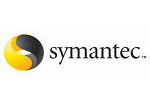PostgreSQL Maestro online Help
| Prev | Return to chapter overview | Next |
Database Editor
Database Editor allows you to browse, add, edit and delete all objects of the selected database and its main properties.
To open the editor, use popup menu of the database node at the Explorer tree.

Subitems
Every tab is intended for managing corresponding database objects (e.g. tables, views, queries, etc.). Open the object in its editor by double-clicking or pressing the Enter key. The popup menu allows you to create new, edit or drop the selected database objects. Using this menu you can also create a copy of the object.
You can operate on several objects at a time. For this you have to select database objects with the Shift or the Ctrl key pressed. After the group of objects is selected, you can operate on it, e.g. delete several objects at once, as it was a single object.
The Properties tab displays available database parameters. Below you can find some of their descriptions.
OID
This field contains the database OID (object identifier). The latter can be defined as a serial number that is automatically added by PostgreSQL to all databases.
Connection Limit
Define the limit of connections to the database here.
Encoding
Character set encoding to use in the database.
Is Template
Set on if the database is template.
Tablespace
Edit the database tablespace name here. The default tablespace is created with the help of the template database tablespace.
Last System OID
Displays the last system OID (object identifier).
| Prev | Return to chapter overview | Next |





 Download
Download Buy
Buy

